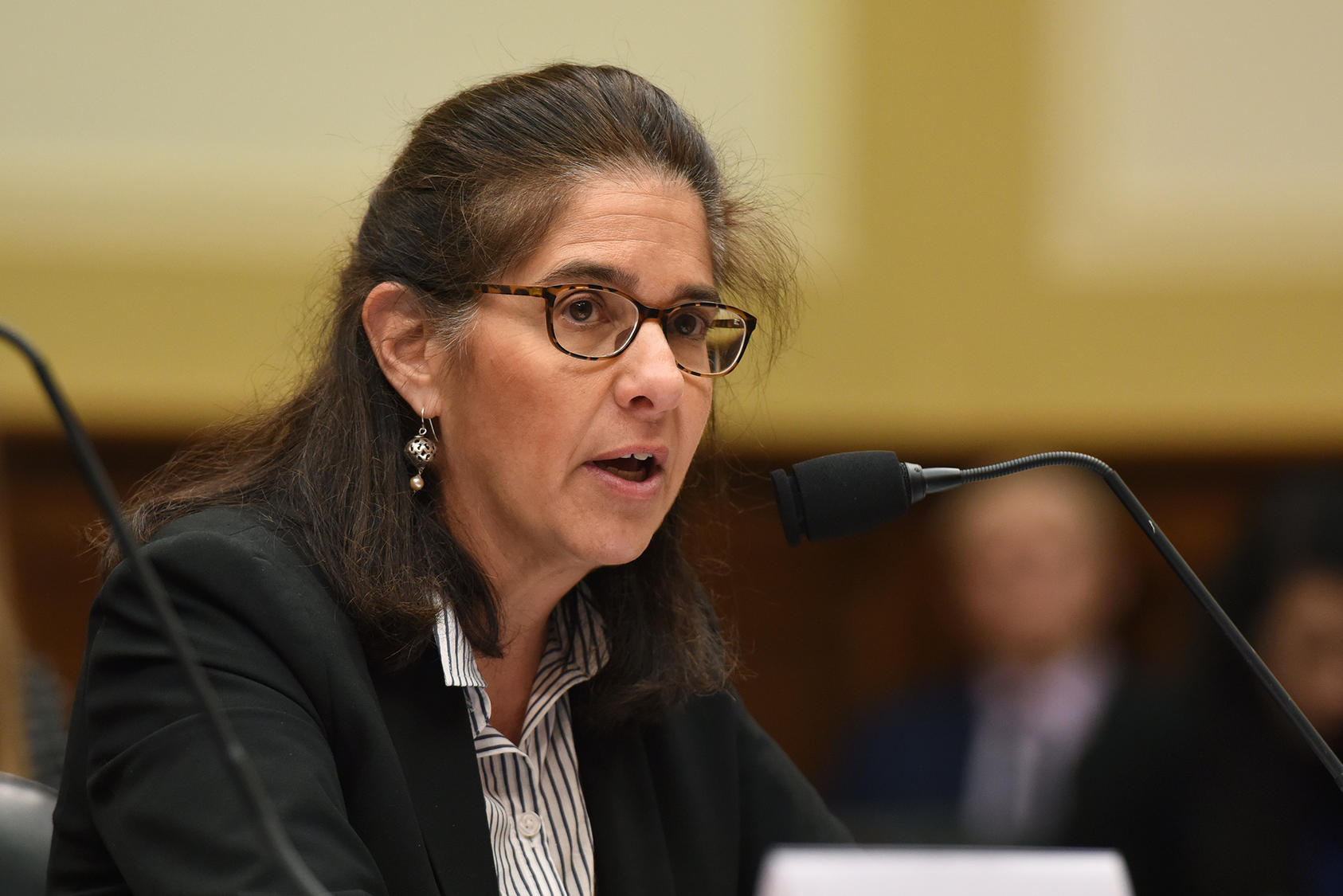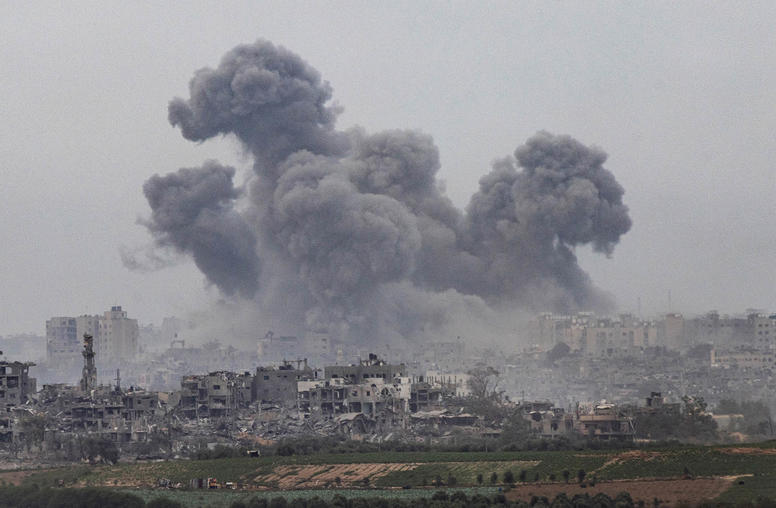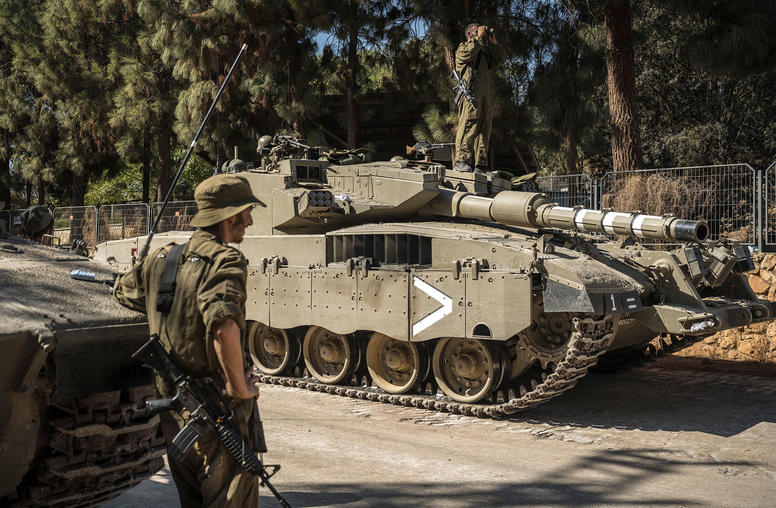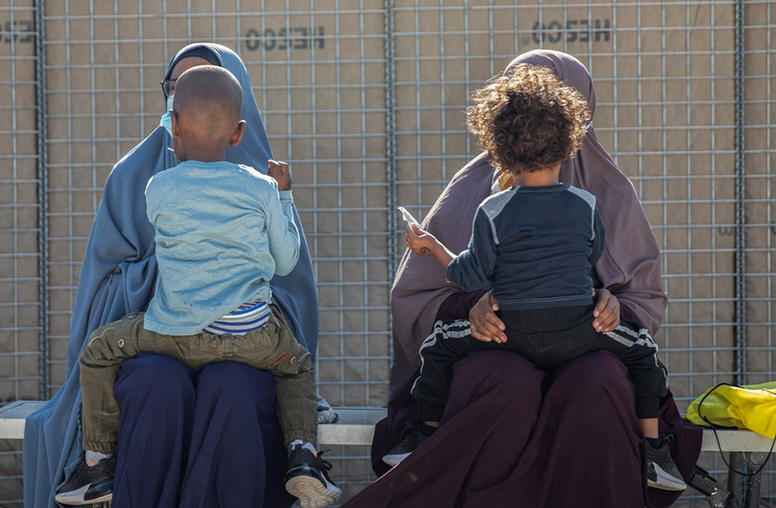U.S. Policy Toward Syria: Part I
Testimony before the House Foreign Affairs Subcommittee on the Middle East and North Africa
Mona Yacoubian, senior advisor for Syria, the Middle East, and North Africa, testified on September 27 at the House Foreign Affairs Subcommittee on Middle East and North Africa hearing on “U.S. Policy Toward Syria: Part I.” Her expert testimony as prepared is presented below.

Introduction
Chairman Ros-Lehtinen, Ranking Member Deutch and members of the Middle East and North Africa Subcommittee, thank you for the opportunity to testify on U.S. policy toward Syria. The timing for this hearing is especially important given the dangerous developments in Syria and the challenges they pose to U.S. interests.
I am a senior advisor on Syria, Middle East and North Africa at the United States Institute of Peace, although the views expressed here are my own. USIP was established by Congress over 30 years ago as an independent, national institute to prevent and resolve violent conflicts abroad, in accordance with U.S. national interests and values. Syria’s multifaceted conflict and its regional—if not global—reverberations continue to pose a significant challenge to U.S. strategic interests.
My testimony today is distilled into three key points:
- Syria’s brutal conflict is entering its most dangerous phase, with significant geostrategic and humanitarian consequences.
- While Syria poses significant challenges, the United States has policy options to shape an outcome more favorable to key U.S. objectives including the enduring defeat of ISIS, curbing Iranian influence, and shaping a political settlement to the conflict.
- Looking over the horizon, the Syrian conflict’s complexity embodies trends that could define future conflicts in the Middle East. Distilling key “lessons learned” from the Syrian conflict will be essential to better prepare for the region’s future challenges.
The Syrian conflict is entering its most dangerous phase.
The conflict in Syria is at a perilous inflection point. The Syrian civil war is entering a messy and protracted endgame. Unfortunately, the regime of Bashar al-Assad, backed by the critical support of Russia and Iran, is likely to prevail. Meanwhile, counter-ISIS military operations are moving toward a final stage, with an estimated 98% of ISIS-occupied territory occupied now liberated. Yet, Syria’s multifaceted conflict—now well into its eighth year—is far from over.
Two key developments account for this precarious time in Syria.
First, the Assad regime’s continued march to regain control over lost territory signals its likely victory over rebel factions in the Syrian civil war.
Implications of Assad’s Survival. The regime will stop at nothing to ensure its survival, coming at an inestimable price to Syrian civilians. Assad’s survival could also upend the regional order, emboldening Iran and its allies and posing new threats to Israel.
Starting in December 2016 with the fall of eastern Aleppo, the regime—supported by Russia and Iran—has systemically clawed back areas once under rebel control. More recently, in May 2018, the regime regained full control of the Damascus suburbs for the first time in seven years. This offensive was followed by a move to the south where the regime won back the governorates of Dera’a and Quneitra, including the strategic Nassib border crossing with Jordan.
Northwestern Idlib province stands as the last remaining anti-Assad rebel stronghold. It also harbors a significant al-Qaeda presence. Earlier this month, the international community watched with deep concern as the regime appeared poised to mount a brutal offensive. An agreement between Russia and Turkey to establish a de-militarized zone in Idlib forestalled the offensive, at least temporarily. Russia and Turkey will jointly oversee the zone which should be cleared of all extremist elements and heavy weaponry by October 15.
Several issues could lead to an unraveling of the agreement. Most prominently, Turkey may not manage to clear the zone of extremist elements or persuade its allies to relinquish their heavy weapons. Meanwhile, the Assad regime vows that it will reassert control over the province, a non-starter for rebel groups on the ground. Russia’s track record of enforcing ceasefires is also poor; Moscow has repeatedly violated such agreements. At best, the agreement will buy time for more intensive diplomacy. Barring the success of these efforts, a renewed military offensive remains likely by year’s end.
The humanitarian cost will be high should the current agreement collapse. An estimated three million civilians, including one million children, currently reside in Idlib. Fighting in Idlib could lead to as many as 800,000 civilians displaced, sparking what one United Nations official termed possibly “the worst humanitarian catastrophe of the 21st century.”
Damascus has prosecuted its campaign to consolidate control with extreme brutality, imperiling Syrian civilians. The Assad regime repeatedly has transgressed international norms and laws governing armed conflict. It has used chemical weapons, bombed civilians indiscriminately and deliberately targeted medical facilities. This past April, in its battle to reclaim the Damascus suburbs, the regime used chemical weapons in an attack that left more than 40 civilians dead. The United States, together with British and French allies, responded with coordinated strikes hitting chemical weapons-related sites.
Iran’s Military Entrenchment. Assad’s survival is due in no small part to Iran’s unprecedented military support, potentially altering the regional balance of power. Tehran has supported Assad with troops, weapons and funding. Hard numbers are difficult to confirm but estimates range from several hundred to a few thousand Iranian troops in Syria. Tehran has also mobilized up to 25,000 fighters from Afghanistan, Iraq, Pakistan, and Lebanon, including several thousand Hezbollah fighters. Iranian fighters and their proxies have been deployed to nearly 40 facilities across Syria. Iran’s military funding is estimated in the millions, possibly billions of dollars. Tehran has also supplied the Assad regime significant amounts of arms and military equipment.
Iran’s military entrenchment in Syria threatens Israel’s security as well as the regional order. The old “rules of the game” establishing strategic deterrence between Israel and Syria no longer apply. While Israel has acquiesced to the Assad regime remaining in power, Jerusalem has underscored it will not tolerate a permanent Iranian military presence in Syria nor allow for the transfer or production of precision-guided missiles. Israel has also made clear it will enforce these red lines. The Israeli Intelligence Minister recently revealed that Israel has undertaken 200 military attacks against Iranian targets in Syria over the past two years.
Neither Israel nor Iran appears to be interested in all-out war, but they may be on a dangerous collision course. Israel wants to prevent Iran from transforming Syria into another Lebanon. Iran wants to preserve and deepen its presence in Syria. A shadow war is already playing out between Israel and Iran in Syria, and prospects for continued escalation remain high. The most significant danger is that hostilities between Israel and Iran escalate into a conflict that spirals out of control. Syria’s accidental shootdown of a Russian plane following Israeli airstrikes illustrates the precariousness of the situation. In response to the shootdown, Moscow announced plans to send an S-300 missile defense system to Syria, adding yet another layer of complexity.
A key question centers on whether Iran’s investment in Syria is reversible. If true, reports that Iranian backed forces are already integrating into Syria’s military and security infrastructure suggest that Iran’s pervasive influence will be very difficult to dismantle. Another question revolves around whether Russia wields sufficient leverage to force Iran out of Syria, or at least to diminish significantly Iran’s influence on the ground. Although Russia’s objectives in Syria may increasingly diverge from those of Iran, Moscow remains unlikely to possess both the desire and capacity to diminish Iran’s power in Syria.
Second, as the military campaign against ISIS enters its final phase, new conflicts and fault lines are emerging.
Turkish-Kurdish Conflict. Conflict between Turkey and the Syrian Kurds looms large with the potential for much broader destabilization. Ankara has long voiced its alarm at the prospect of a Kurdish entity along its southern flank. For Turkey, the Kurdish threat is existential, equal if not greater than that posed by ISIS. This past March, Turkey, relying on Syrian proxies, seized control of the Kurdish canton of Afrin in northwestern Syria. In response, an incipient Kurdish insurgency in Afrin may be taking shape, signaling greater instability in this region.
Further to the east, mounting tensions in Manbij raised the specter of the United States and Turkey—NATO allies—engaging in direct military confrontation. U.S.-led diplomacy has de-escalated the situation with a “road map” that envisions joint U.S.-Turkish patrols, the withdrawal of Kurdish commanders from the city and the devolution of security and governance responsibilities to the local Arab population. Yet, Turkey appears to be raising the stakes again, with the Turkish Defense Minister recently demanding that Kurdish militants abandon Syria entirely. Turkish President Erdogan previously threatened to oust the Kurds from all areas along Syria’s border with Turkey.
U.S. Hostilities with Russia. Potential hostilities between the United States and Russia pose a less immediate, but more significant threat. This past February U.S. forces engaged in direct hostilities with several hundred pro-regime forces, including a significant number of Russian mercenaries in eastern Syria. The firefight—sparked by an unsuccessful attempt by regime proxies to retake a key gas field—left 200-300 Russian contractors dead. Rigorous efforts at U.S.-Russian de-confliction have averted additional hostilities. Yet, as the regime consolidates its control in the west of the country, it is likely to turn its attention increasingly toward the east. The regime could seek to retake critical hydrocarbon facilities currently under the control of the U.S.-backed Syrian Democratic Forces. These efforts could once again put the United States and Russia in direct confrontation. Adding to the tensions, Russia reportedly warned the United States that its forces are prepared to attack the remotely-located U.S. base at Tanf, highlighting another potential flashpoint between U.S. and Russian forces.
An ISIS Insurgency. Finally, while ISIS has been ousted from much of Syria, the extremist movement appears to be morphing into a potent insurgency. In its most recent report to Congress, the Lead Inspector General for Operation Inherent Resolve noted a higher number of ISIS fighters remaining in Syria than previously estimated. More importantly, though vastly diminished, ISIS’s current capabilities are considered to surpass those of Al-Qaeda in Iraq at its peak in 2006-2007. According to a recent United Nations report, the ISIS “bureaucracy remains essentially intact” as well as its “collective discipline.” Meanwhile, the core grievances that fueled ISIS remain unaddressed, if not exacerbated, suggesting the terrorist group will continue to draw on a significant pool of potential recruits.
U.S. Policy Options – Adopting a “Three D” approach to Syria
The Trump Administration’s recent announcement of a new Syria team led by Ambassador Jim Jeffrey, a seasoned diplomat, provides an important opportunity to consider U.S. policy options for Syria. Ambassador Jeffrey’s appointment coincides with what he terms “a more active approach” on Syria. Maintaining a U.S. military presence in Syria for the foreseeable future and re-energizing U.S. diplomacy on Syria comprise the most critical elements of this new approach. Increasing pressure via new sanctions and refusing to fund reconstruction in regime-held areas are additional elements.
The Administration’s renewed focus on Syria is a welcome development. While the challenges posed to U.S. interests in Syria are significant, the United States can undertake steps to shape the conflict’s trajectory in a more positive direction. Adopting a “Three-D” approach that leverages elements of U.S. power—defense, diplomacy and development—would facilitate a Syria strategy that pursues core U.S. national security interests within realistic constraints of what is possible.
Specifically, this “Three-D” approach should seek progress on three key U.S. objectives in Syria:
- Ensure the enduring defeat of ISIS;
- Counter the further expansion of Iranian influence;
- Shape a political settlement to the conflict, containing the Assad regime in the interim.
A “Three-D” approach to Syria would rely on three inter-related and mutually reinforcing baskets of policy options.
The Defense Basket
Maintaining the 2,000 plus U.S. special operations force (U.S. SOF) presence on the ground inside Syria is a foundational element of a “Three-D” approach to Syria. The benefits of the U.S. military presence are significant:
- Liberating ISIS-held areas. Working “by, with and through” the Kurdish-led Syrian Democratic Forces (SDF), U.S. SOF have played a critical role in liberating ISIS-held areas, pushing ISIS out of key cities into more desolate areas in the Middle Euphrates Valley (MERV). The current focus is to clear the MERV of ISIS remnants.
- Training Local Hold Forces. As part of these efforts, U.S. SOF are continuing to train local forces to serve as hold forces in their towns and cities, a key element in any sustainable strategy to ensure against the re-emergence of ISIS.
- Providing Security for Civilian-led Stabilization Efforts. U.S. SOF on the ground also facilitate the work of the small cadre of U.S. civilian stabilization experts from the State Department and the U.S. Agency for International Development (USAID) who are implementing critical stabilization programming together with their local Syrian partners.
- Impeding Further Expansion by the Assad Regime or Iran. The U.S. military presence in Syria serves as a key counterweight against the Syrian regime and Iran. Were the U.S. to withdraw, the Assad regime backed by Iran undoubtedly would seek to capitalize on the U.S. absence and retake these areas.
- Serving as Important Source of Leverage. The U.S. and its local Syrian partners have built important leverage on the ground that enhances U.S. influence in Syria. The U.S.-allied SDF currently controls an estimated 25% of Syrian territory. This region encompasses critical resources that are the lifeblood of the Syrian economy: oil and gas installations, including two of Syria’s largest and most productive oil fields; essential water resources; and rich agricultural land. The region also holds strategic significance given its location along trading routes as well as the “land bridge” Iran seeks to build across Iraq and Syria.
Deterring Chemical Weapons Use. The U.S. military can also play a leading role in deterring the future use of chemical weapons by the Assad regime, a critical element of an Assad containment strategy while the regime remains in power. Creating an effective chemical weapons deterrence strategy against a regime that routinely disrespects international norms will be a challenging, but an essential element of U.S. policy toward Syria. Since 2017, the United States has twice responded with military force to Assad’s use of chemical weapons. Yet, it remains unclear whether sufficient deterrence has been established. Together with Britain and France, the United States has vowed to respond militarily should the regime use chemical weapons in Idlib. Planning for this contingency should be well in place should the Russian-Turkish de-escalation agreement collapse.
The Diplomatic Basket
Rejuvenating U.S. regional diplomacy focused on Syria is equally critical. The United States should deepen multifaceted diplomatic efforts that address various aspects of the Syrian conflict with regional players, European allies and Russia:
Improve ties with Turkey – a key regional stakeholder in the Syrian conflict. U.S.-Turkish ties are at a nadir, yet cooperation with Turkey on Syria is critical. Turkey’s role in Syria is anchored by its control of two key enclaves (Afrin and Euphrates Shield), its presence in Idlib, and its participation in the Astana Process. Turkey also hosts the largest number of Syrian refugees estimated at 3.5 million.
U.S. tensions with Turkey over Syria may be deep, but not irreconcilable. Fortunately, important progress on Manbij has been insulated from the downturn in bilateral relations. U.S. diplomatic efforts should focus on sustaining and deepening this cooperation. Encouraging broader de-escalation between Turkey and Turkish-based Kurdistan Workers’ Party (PKK) elements will be essential to addressing Turkish-Kurdish tensions in Syria. While the United States currently has limited leverage in this regard, U.S. diplomatic efforts should seek openings to help restart Turkish-PKK negotiations which broke off in 2015.
Engage with Israel, Jordan, and Russia to prevent unintended escalation in the deepening shadow war between Israel and Iran inside Syria. Israel is establishing new red lines regarding Iran’s military presence in Syria and the potential manufacture and proliferation of guided missiles. The use of kinetic measures to communicate these red lines may be effective in the short term but can easily spin out of control. Even if a shaky state of deterrence is holding, the risk of miscalculation leading to escalating hostilities, if not all out war, is high. Reinvigorated U.S. engagement on these challenging issues is needed. Heightened tensions between Israel and Russia underscore the need for the United States to play a more assertive role. Specifically, the United States should engage Israel, Jordan and Russia in discussions aimed at establishing and institutionalizing more comprehensive and robust de-confliction mechanisms.
Deepen engagement with European allies on Syria. Despite tensions with European allies on other Middle Eastern issues, Syria remains an area of cooperation. Coordinated U.S. and European statements on Idlib may have played an important role in impelling Russia to negotiate an agreement with Turkey. Earlier this year, Britain and France joined the United States to undertake joint missile strikes against Syria following the Assad regime’s chemical weapons attack on Douma. Meanwhile, Germany remains a key partner on stabilization efforts inside Syria. The United States should build on these shared interests to forge a strong counterweight to the Russian-Iranian axis on Syria.
The Development Basket
Restoring U.S. stabilization assistance is essential to a successful “three D” approach on Syria. U.S. stabilization assistance has been critical to the post-ISIS liberation strategy in Syria. Encouraging Gulf allies and others to contribute to these efforts is important and to be commended. But there is no substitute for U.S. leadership anchored by concrete commitments on the ground.
Highlighting a Success. To date, U.S. stabilization efforts in eastern Syria have been a success with tangible achievements on the ground. Leveraging limited resources and a small team of civilian experts on the ground, the United States has led efforts to stabilize communities in ISIS-liberated areas. Focused on de-mining, rubble removal, restoring essential services, and building the capacity of local governance structures, U.S. stabilization assistance has played a critical role in helping displaced Syrians return to their homes and ensured against the emergence of dangerous power vacuums that ISIS or other like-minded extremists could exploit.
A Strategic Imperative. As highlighted in the recent U.S. government Stabilization Assistance Review, stabilization efforts are increasingly recognized across the Interagency as a strategic imperative. Restoring U.S. stabilization funding will help consolidate and sustain the military gains made against ISIS in Syria. Stabilization assistance focused on governance, livelihoods and social cohesion is critical to addressing underlying popular grievances. Building representative local government that is accountable to the local population is perhaps the most powerful antidote to both the Assad regime and extremist groups such as ISIS. Providing agricultural inputs to farmers, revitalizing markets in urban areas, providing small business loans and vocational training can help struggling communities to recover. Addressing communal tensions and beginning to repair the frayed social fabric of local communities through dialogues and other efforts to restore social cohesion would round out the stabilization effort.
A Future Template. This model of decentralized governance offers a template for the future. A highly-decentralized Syria marked by devolving significant authority from the central government in Damascus to local communities will be essential for a sustainable political settlement to the conflict. Investing now in strengthening local governance and supporting localized economic and social recovery will help ensure that these communities stand as an effective counterweight to the regime and lay the foundation of a future, peaceful Syria.
Lessons Learned from the Syria as a Twenty-First Century Conflict
Unfortunately, Syria’s violent conflict could be an important harbinger of future conflicts in the Middle East. The Syrian conflict serves as a “canary in the coal mine” telegraphing the complexity of the challenges that lie ahead. Specifically, the Syrian conflict has been characterized by:
- the rise of the so-called Islamic State, a new generation of jihadists with a demonstrated capacity to innovate and adapt, leveraging new tactics and espousing a more virulent Salafi-jihadist ideology;
- battlefield tactics that routinely transgress all laws of armed conflict, including the indiscriminate bombing of civilians and the repeated use of chemical weapons;
- massive levels of civilian displacement and humanitarian need that have overwhelmed the humanitarian assistance infrastructure and imperiled neighboring refugee-hosting countries.
Understanding these developments will be critical for anticipating and preparing for future challenges emanating from the region. Each of these challenges—the rise of ISIS, the routine transgression of international laws, and catastrophic humanitarian crisis—demands new and more creative approaches. To address these challenges, policy makers and analysts should focus on the following:
- Build greater understanding into the drivers of violent extremism and the most effective responses to prevent the spread of violent extremism, leveraging the findings of the Congressionally-mandated, USIP-hosted Task Force on Extremism in Fragile States, along with similar efforts currently undertaken both inside and outside the U.S. government;
- Develop new strategies and doctrine on the use of force to deter the use of chemical weapons by finding a way to use force that effectively deters the use of chemical weapons without leading to an uncontrolled escalation in the conflict;
- Invest in more creative approaches to address civilian displacement in violent conflict, particularly efforts that bridge humanitarian assistance with longer term development efforts that facilitate livelihoods and education for displaced civilians.
The Syrian tragedy will resonate for generations to come. It is essential to seize the opportunity to both develop effective policy responses to the current crisis as well as more forward-leaning strategies to similar challenges to U.S. interests that will likely arise in the future.
The view expressed in this testimony are those of the author and not the U.S. Institute of Peace.



